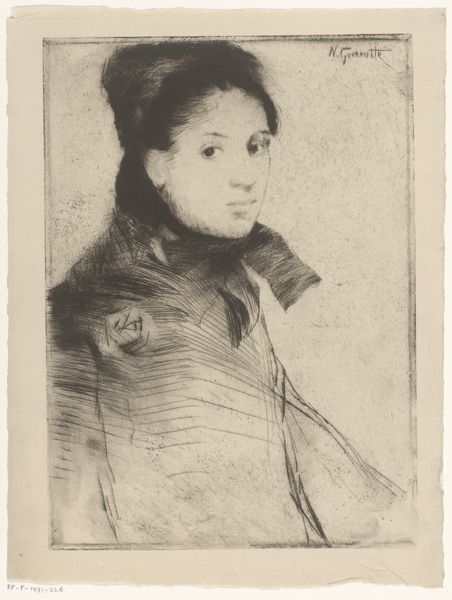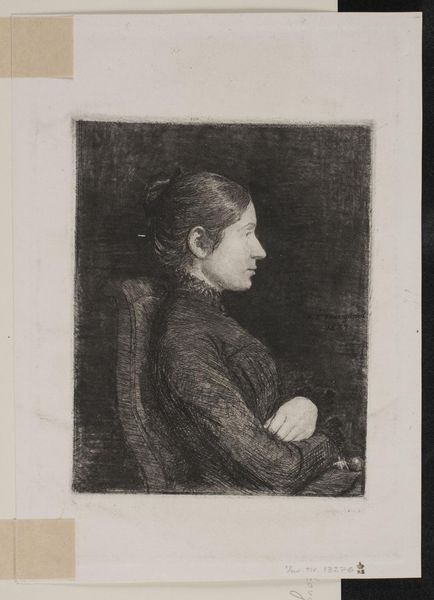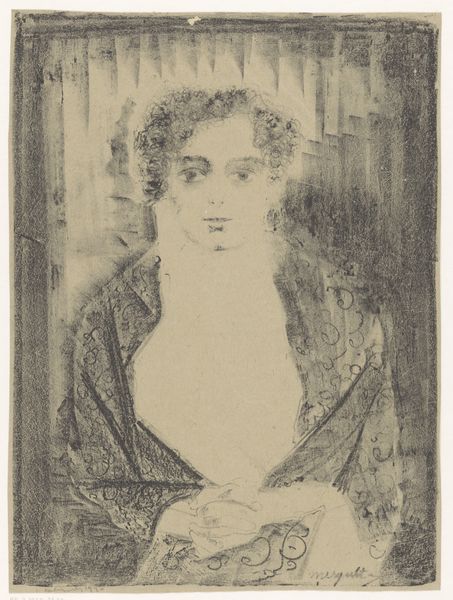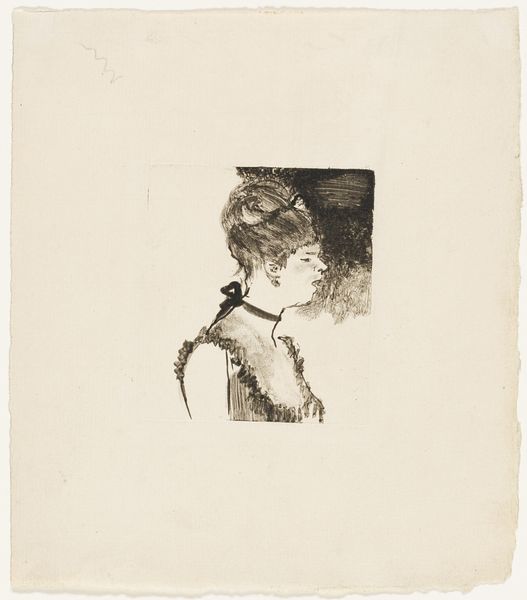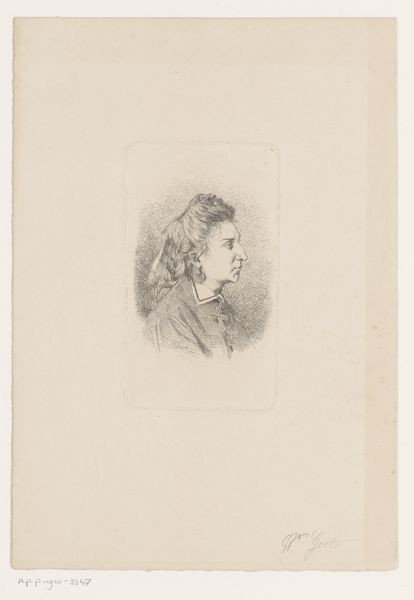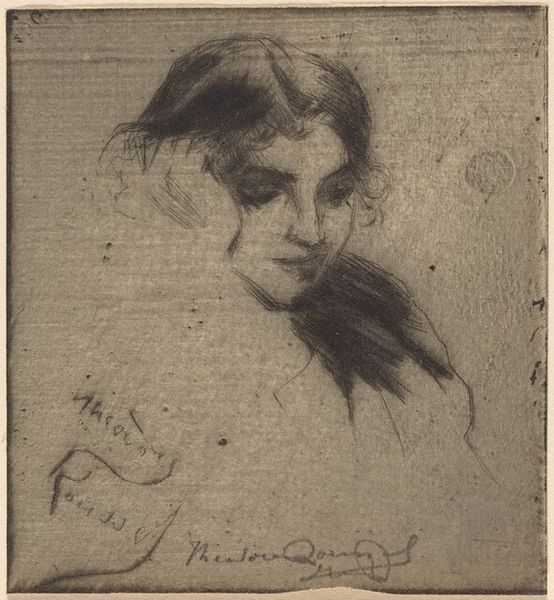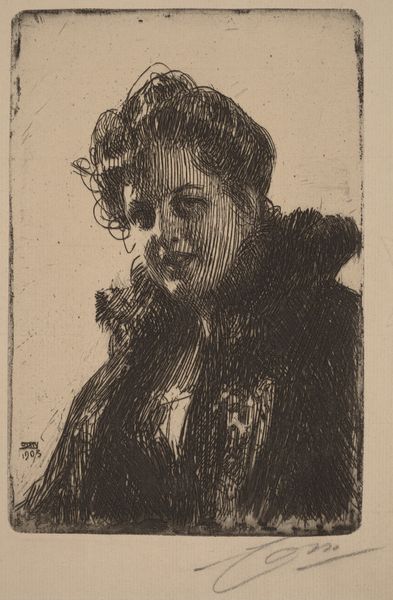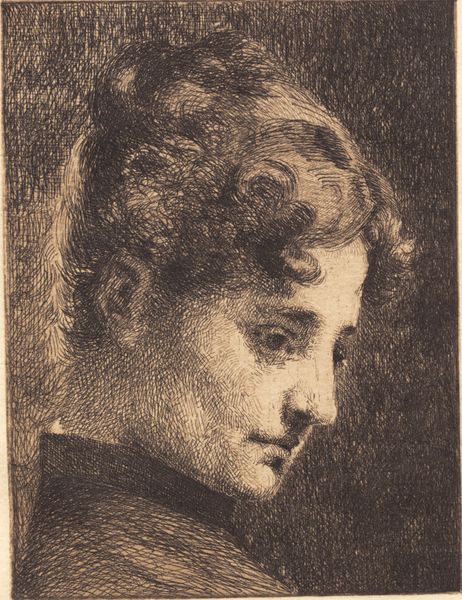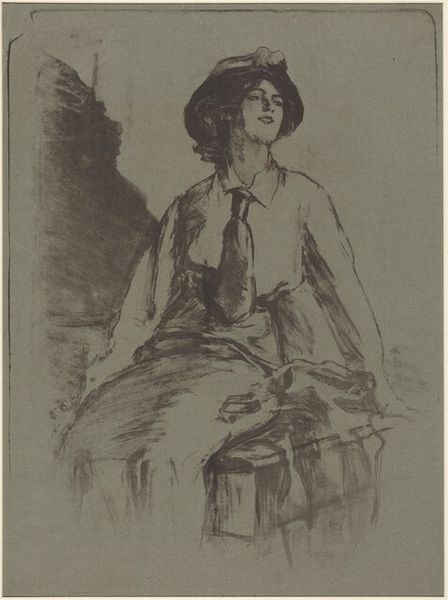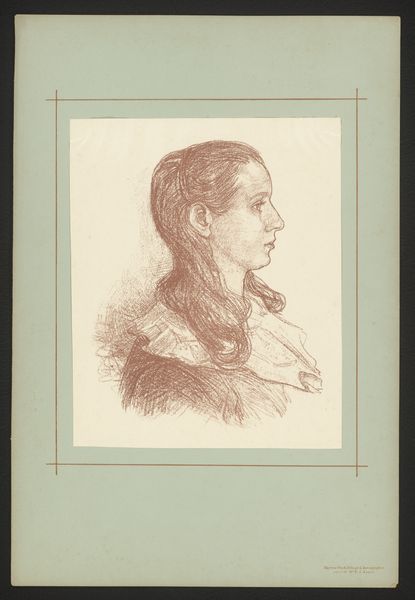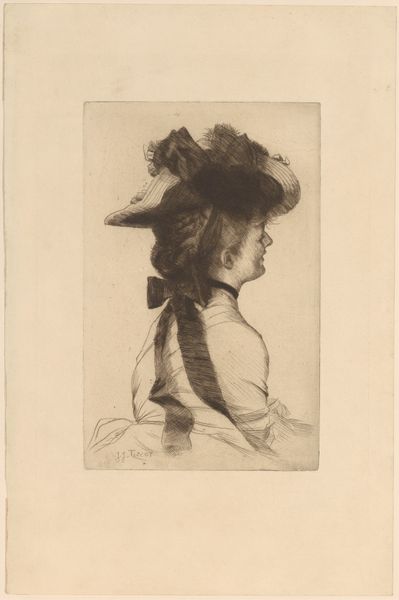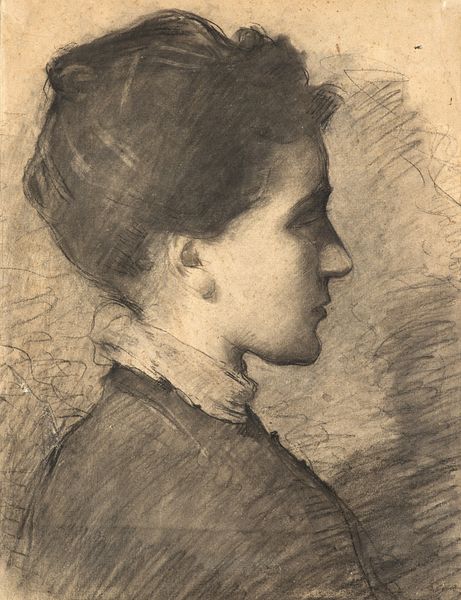
#
pencil drawn
#
amateur sketch
#
toned paper
#
light pencil work
# print
#
pencil sketch
#
charcoal drawing
#
charcoal art
#
portrait reference
#
pencil drawing
#
portrait drawing
Dimensions: image: 23.18 × 18.42 cm (9 1/8 × 7 1/4 in.); sheet: 30.16 × 24.45 cm (11 7/8 × 9 5/8 in.)
Copyright: National Gallery of Art: CC0 1.0
Curator: Frederick W. Freer's "Honeysuckle," created around 1887, is a captivating print. Editor: It's quite delicate, isn't it? The softness of the charcoal gives it an almost dreamlike quality, and the use of toned paper warms the portrait significantly. Curator: Absolutely. Looking at this work through the lens of 19th-century portraiture, I’m struck by how it may be reflecting shifting gender roles, especially in light of Freer’s associations with the emerging American Impressionist movement and the artistic communities developing around women at that time. The ethereal quality, like the sitter is caught between societal constraints and unbound femininity. Editor: I see your point about the societal constraints. Structurally, it’s the soft contrast that I find most engaging; there are no harsh lines. Observe how Freer employs hatching to render depth without imposing boundaries. Curator: Indeed, and I can’t help but read her slightly downcast gaze as an element of introspection and even perhaps resistance—the silent defiance of the subjected Victorian woman is something that might have been captured unintentionally or otherwise by Freer. Her slight smile makes me think she is aware of something outside of the picture. Editor: While that reading is certainly possible, one cannot deny that the subtlety in the print arises directly from the masterful control of charcoal. Freer evokes textures—the soft fabric, her hair—through tonal variations alone. There are underlying tensions there as well. And the placement of the flower and the bird in the corner suggest the freedom we see being granted and given as time passes and social mores become more accepting. Curator: Those tensions speak to the societal tightrope women had to walk—celebrated for beauty and domesticity, yet often denied intellectual or professional avenues. Her image can be viewed within an artistic moment where New Women are claiming space within portraiture, reflecting their yearning for self-definition. Editor: Perhaps, or perhaps it simply presents us with the artist's mastery of charcoal on toned paper; he understands perfectly that line implies contour and value signifies depth and mood. Both of which have made a lovely and captivating work that we have dissected. Curator: True, and it shows the power art has to start these dialogs. Editor: Agreed, this dialogue—much like art itself—requires continuous questioning and seeing multiple sides to things.
Comments
No comments
Be the first to comment and join the conversation on the ultimate creative platform.
